SAFETY DATA SHEET
Benzoyl Peroxide Powder
1. IDENTIFICATION
Product Identifiers
Product Name:
Benzoyl Peroxide Powder
Other Names:
Not available.
Product Number(s):
BENZ. PEROXIDE
CAS Number:
Not available
Recommended use of the chemical and restriction on use
Laboratory chemicals
Company Details
ProSciTech Pty Ltd
11 Carlton Street
KIRWAN QLD 4817
Australia(07) 4773 9444www.proscitech.com
11 Carlton Street
KIRWAN QLD 4817
Australia(07) 4773 9444www.proscitech.com
Emergency Contact Details
ProSciTech Pty Ltd
11 Carlton Street
KIRWAN QLD 4817
Australia(07) 4773 9444www.proscitech.com
11 Carlton Street
KIRWAN QLD 4817
Australia(07) 4773 9444www.proscitech.com
2. HAZARDS IDENTIFICATION
Classification of the substance or mixture
GHS01 Exploding bomb Unst. Expl. H200 Unstable explosive.
GHS02 Flame Org. Perox. D H242 Heating may cause a fire.
GHS08 Health hazard
Repr. 1B H360 May damage fertility or the unborn child.
GHS07
Eye Irrit. 2A H319 Causes serious eye irritation.
Skin Sens. 1 H317 May cause an allergic skin reaction.
GHS02 Flame Org. Perox. D H242 Heating may cause a fire.
GHS08 Health hazard
Repr. 1B H360 May damage fertility or the unborn child.
GHS07
Eye Irrit. 2A H319 Causes serious eye irritation.
Skin Sens. 1 H317 May cause an allergic skin reaction.
Label Elements
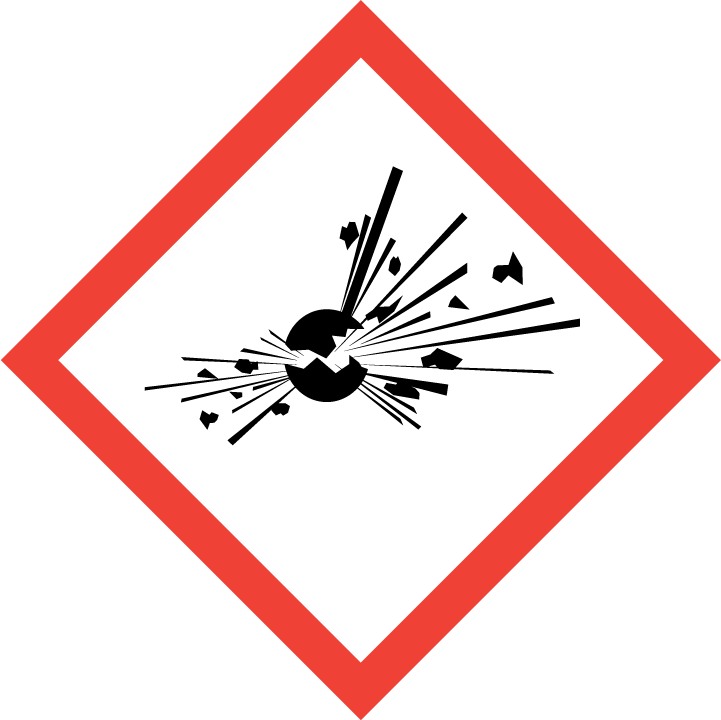
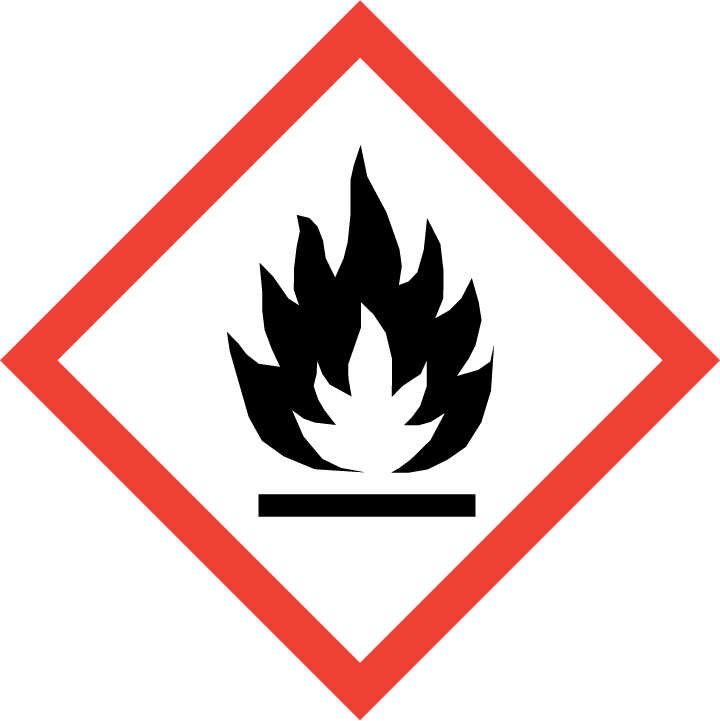
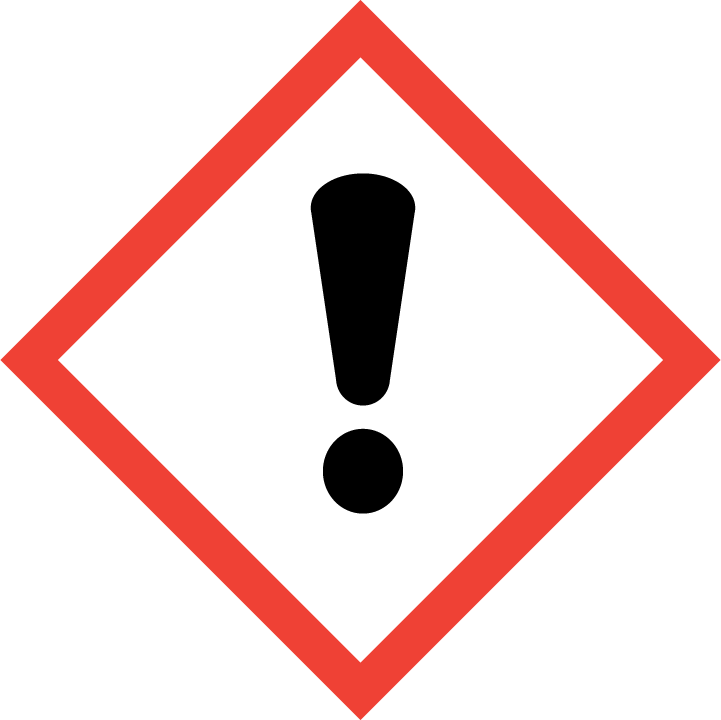
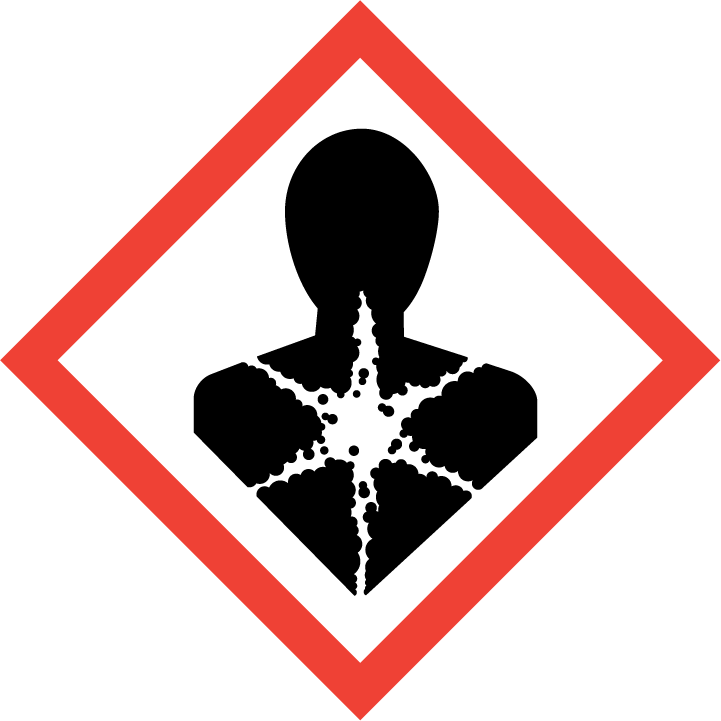
Signal Words
Danger
Hazard Statement(s)
Hazard-determining components of labelling:
dibenzoyl peroxide
dibutyl phthalate
Hazard statements
Unstable explosive.
Heating may cause a fire.
Causes serious eye irritation.
May cause an allergic skin reaction.
May damage fertility or the unborn child
dibenzoyl peroxide
dibutyl phthalate
Hazard statements
Unstable explosive.
Heating may cause a fire.
Causes serious eye irritation.
May cause an allergic skin reaction.
May damage fertility or the unborn child
Precautionary Statement(s)
Obtain special instructions before use.
Do not handle until all safety precautions have been read and understood.
Keep away from heat/sparks/open flames/hot surfaces. - No smoking.
Keep/Store away from clothing/combustible materials.
Keep only in original container.
Avoid breathing dust/fume/gas/mist/vapours/spray
Wash thoroughly after handling.
Contaminated work clothing must not be allowed out of the workplace.
Wear protective gloves/protective clothing/eye protection/face protection.
Wear personal protective equipment/face protection.
If on skin: Wash with plenty of water.
If in eyes: Rinse cautiously with water for several minutes. Remove contact lenses, if present and easy to do.
Continue rinsing.
IF exposed or concerned: Get medical advice/attention.
Specific treatment (see on this label).
If skin irritation or rash occurs: Get medical advice/attention.
If eye irritation persists: Get medical advice/attention.
Wash contaminated clothing before reuse.
Explosion risk in case of fire.
DO NOT fight fire when fire reaches explosives.
Evacuate area.
Store in accordance with local/regional/national/international regulations.
Store locked up.
Protect from sunlight.
Store at temperatures not exceeding 70°F. Keep cool.
Store away from other materials.
Dispose of contents/container in accordance with local/regional/national/international regulations
Do not handle until all safety precautions have been read and understood.
Keep away from heat/sparks/open flames/hot surfaces. - No smoking.
Keep/Store away from clothing/combustible materials.
Keep only in original container.
Avoid breathing dust/fume/gas/mist/vapours/spray
Wash thoroughly after handling.
Contaminated work clothing must not be allowed out of the workplace.
Wear protective gloves/protective clothing/eye protection/face protection.
Wear personal protective equipment/face protection.
If on skin: Wash with plenty of water.
If in eyes: Rinse cautiously with water for several minutes. Remove contact lenses, if present and easy to do.
Continue rinsing.
IF exposed or concerned: Get medical advice/attention.
Specific treatment (see on this label).
If skin irritation or rash occurs: Get medical advice/attention.
If eye irritation persists: Get medical advice/attention.
Wash contaminated clothing before reuse.
Explosion risk in case of fire.
DO NOT fight fire when fire reaches explosives.
Evacuate area.
Store in accordance with local/regional/national/international regulations.
Store locked up.
Protect from sunlight.
Store at temperatures not exceeding 70°F. Keep cool.
Store away from other materials.
Dispose of contents/container in accordance with local/regional/national/international regulations
Primary route(s) of entry
Possible through skin contact
Human Health
Inhalation:
If exposed or concerned: Get medical advice/attention.
Ingestion:
If exposed or concerned: Get medical advice/attention.
Eyes:
Rinse cautiously with water for several minutes. Remove contact lenses, if present and easy to do. Continue rinsing. If eye irritation persists: Get medical advice/attention.
Skin:
Wash with plenty of water. If skin irritation or rash occurs: Get medical advice/attention. Wash contaminated clothing before reuse.
Environment
Store in accordance with local/regional/national/international regulations.
Store locked up.
Protect from sunlight.
Store at temperatures not exceeding 21°C. Keep cool.
Store away from other materials.
Dispose of contents/container in accordance with local/regional/national/international regulations.
Store locked up.
Protect from sunlight.
Store at temperatures not exceeding 21°C. Keep cool.
Store away from other materials.
Dispose of contents/container in accordance with local/regional/national/international regulations.
3. COMPOSITION/INFORMATION ON INGREDIENTS
Name
CAS No.
Content (w/w)
Classification
dibenzoyl peroxide
94-36-0
>50-≤100%
Org. Perox. B,H241;Acute Tox. 4, H302;Eye Irrit. 2, H319;Skin Sens. 1, H317
dicyclohexyl phthalate
84-74-2
>25-≤50%
Repr. 1B, H360D;Skin Sens. 1, H317
4. FIRST AID MEASURES
Ingestion
Clean mouth with water and drink afterwards plenty of water. If a person vomits when lying on his back, place him in the recovery position. Do NOT induce vomiting. If swallowed, seek medical advice immediately and show this container or label.
Inhalation
Supply fresh air. No adverse effects are anticipated from inhalation. If breathed in, move person into fresh air. If not breathing, give artificial respiration. Call a physician immediately
Skin Contact
Immediately wash with water and soap and rinse thoroughly.
Eye Contact
Rinse opened eye for several minutes under running water. If symptoms persist, consult a doctor.
Other Information
No further relevant information available.
5. FIREFIGHTING MEASURES
Suitable extinguishing equipment
Use fire extinguishing methods suitable to surrounding conditions. Use water spray, alcohol-resistant foam, dry chemical or carbon dioxide.
** Unsuitable extinguishing agents: High volume water jet.
Cool closed containers exposed to fire with water spray.
Do not allow run-off from fire fighting to enter drains or water courses.
** Unsuitable extinguishing agents: High volume water jet.
Cool closed containers exposed to fire with water spray.
Do not allow run-off from fire fighting to enter drains or water courses.
HAZCHEM
No further relevant information available.
Special protective equipment and precautions for fire fighters
6. ACCIDENTAL RELEASE MEASURES
Personal precautions, protective equipment and emergency procedures
Wear protective gloves and glasses. Wear respiratory protection. Wear personal protective equipment.
Environmental precautions
Do not allow to enter sewers/ surface or ground water. Avoid subsoil penetration.
Do not allow material to contaminate ground water system.
Do not contaminate the water. If the product contaminates rivers and lakes or drains inform respective authorities. Do not let product enter drains
Do not allow material to contaminate ground water system.
Do not contaminate the water. If the product contaminates rivers and lakes or drains inform respective authorities. Do not let product enter drains
Methods and materials for containment and clean up
Dispose of contaminated material as waste according to item 13.
Ensure adequate ventilation.
Remove mechanically and with care (e.g., with a clean polyethylene plastic shovel).
Soak up inert absorbent material (e.g., sand, silica gel, acid binder, universal binder, sawdust).
Never add other substances or waste material to product residue.
Offer surplus and non-recyclable solutions to a licensed disposal company.
Ensure adequate ventilation.
Remove mechanically and with care (e.g., with a clean polyethylene plastic shovel).
Soak up inert absorbent material (e.g., sand, silica gel, acid binder, universal binder, sawdust).
Never add other substances or waste material to product residue.
Offer surplus and non-recyclable solutions to a licensed disposal company.
7. HANDLING AND STORAGE
Precautions for safe handling
Ensure good ventilation/exhaustion at the workplace.
Open and handle the receptacle with care.
Prevent formation of aerosols
Protect from heat.
Keep respiratory protective device available.
Open and handle the receptacle with care.
Prevent formation of aerosols
Protect from heat.
Keep respiratory protective device available.
Conditions for safe storage
Protect from heat and direct sunlight
8. EXPOSURE CONTROLS/PERSONAL PROTECTION
Exposure Standards
Material
TWA ppm
TWA mg/m3
STEL ppm
STEL mg/m3
84-74-2 dibutyl phthalate
-
5mg/m³
-
-
Engineering controls
Keep away from foodstuffs, beverages and feed.
Immediately remove all soiled and contaminated clothing
Wash hands before breaks and at the end of work.
Store protective clothing separately.
Avoid contact with the eyes.
Avoid contact with the eyes and skin
Immediately remove all soiled and contaminated clothing
Wash hands before breaks and at the end of work.
Store protective clothing separately.
Avoid contact with the eyes.
Avoid contact with the eyes and skin
Personal protective equipment
Eye and face protection
Tightly sealed goggles.
Skin protection
Protective gloves. The glove material has to be impermeable and resistant to the product/the substance/the preparation. Selection of the glove material on consideration of the penetration times, rates of diffusion and the degradation. The exact break through time has to be found out by the manufacturer or the protective gloves and has to be observed.
Body protection
Protective clothing.
Respiratory protection
In case of brief exposure or low pollution use respiratory filter device. In case of intensive or longer exposure use self-contained respiratory protective device.
9. PHYSICAL AND CHEMICAL PROPERTIES
General information
Appearance
White paste
Odour
Mild
pH
Not determined
Vapour Pressure
Not determined
Density
at 20 °C: 1.2025 g/cm³
Boiling Point
100 °C
Melting Point
Not determined
Solubility
Not miscible or difficult to mix.
Specific Gravity of Density
Not determined
Flash Point
Not determined
Flammable (Explosive) Limits
Product does not present an explosion hazard.
Ignition Temperature
Product is not selfigniting.
Formula
Solvent content:
· Water: 30.0 %
· VOC (EC) 0.00 %
· Solids content: 60.0 %
· Water: 30.0 %
· VOC (EC) 0.00 %
· Solids content: 60.0 %
10. STABILITY AND REACTIVITY
Reactivity
No further relevant information available.
Chemical stability
No decomposition if used according to specifications.
Possibility of hazardous reactions
No dangerous reactions known.
Conditions to avoid
No further relevant information available.
Incompatible materials
No further relevant information available
11. TOXICOLOGICAL INFORMATION
Acute effects
84-74-2 dibutyl phthalate
Oral LD50 8,000 mg/kg (rat)
Dermal LD50 20,000 mg/kg (rabbit)
Oral LD50 8,000 mg/kg (rat)
Dermal LD50 20,000 mg/kg (rabbit)
Eye contact
Causes eye irritation.
Skin contact
Sensitisation possible through skin contact
Ingestion
No further relevant information is available.
Inhalation
No further relevant information available.
Toxicity and irritation
Irritant
12. ECOLOGICAL INFORMATION
Ecotoxicity
Toxic for fish.
Persistence and degradability
No further relevant information available.
Bioaccumulative potential
No further relevant information available.
Other adverse effects
Water hazard class 3: Extremely hazardous for water.
Do not allow the product to reach ground water, water course or sewage system, even in small quantities.
Danger to drinking water if even extremely small quantities leak into the ground.
Also poisonous for fish and plankton in water bodies.
Toxic for aquatic organisms.
Do not allow the product to reach ground water, water course or sewage system, even in small quantities.
Danger to drinking water if even extremely small quantities leak into the ground.
Also poisonous for fish and plankton in water bodies.
Toxic for aquatic organisms.
13. DISPOSAL CONSIDERATIONS
General information
Must not be disposed together with household garbage. Do not allow product to reach sewage system.
Disposal must be made according to official regulations.
Disposal must be made according to official regulations.
14. TRANSPORT INFORMATION
ADG label required
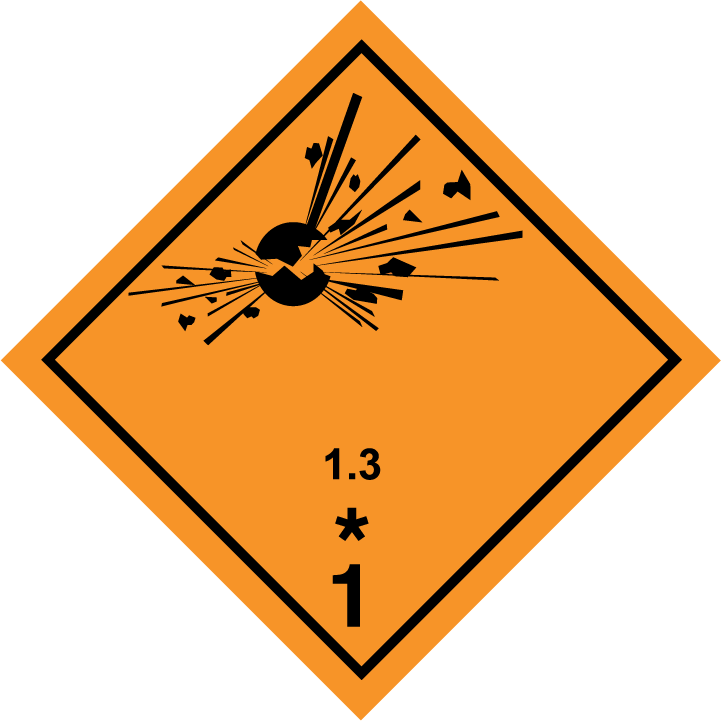
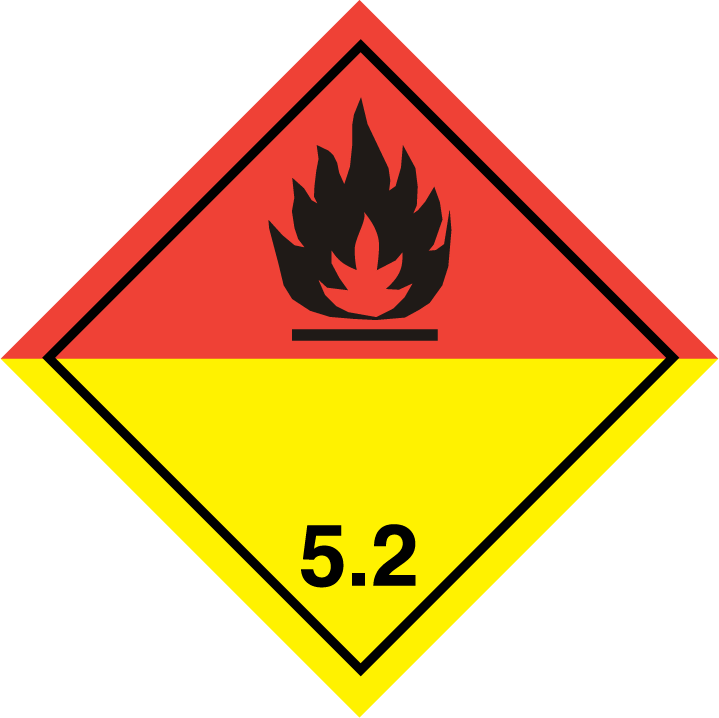
HAZCHEM
No further relevant information available.
UN Number
UN3106
Proper shipping name
ORGANIC PEROXIDE TYPE D, SOLID
Transport hazard class
Class 5.2 Organic peroxides.
Label 5.2+1
Label 5.2+1
Packing group
ADG II
IMDGT, IATA III
IMDGT, IATA III
Environmental hazard
Environmental hazard: Not applicable.
Marine pollutant: Yes (DOT)
Marine pollutant: Yes (DOT)
Special precautions for users
Warning: Organic peroxides.
EMS Number: F-J,S-R
Stowage Category: D
Stowage Code: SW1 protected from sources of heat.
Segregation Code:
SG1 For packages carrying a subsidiary risk of class 1, segregation as for class 1, division 1.3. However, in relation to goods of class 1, segregation as for the primary hazard.
SG35 Stow "separated from" acids.
SG36 Stow "separated from" alkalis.
EMS Number: F-J,S-R
Stowage Category: D
Stowage Code: SW1 protected from sources of heat.
Segregation Code:
SG1 For packages carrying a subsidiary risk of class 1, segregation as for class 1, division 1.3. However, in relation to goods of class 1, segregation as for the primary hazard.
SG35 Stow "separated from" acids.
SG36 Stow "separated from" alkalis.
Additional information
Limited quantities (LQ) 500g
Excepted quantities (EQ) Code: E0
** Not permitted as Excepted Quantity.
Excepted quantities (EQ) Code: E0
** Not permitted as Excepted Quantity.
15. REGULATORY INFORMATION
Poisons Schedule Number
94-36-0 dibenzoyl peroxide S2, S4, S5
84-74-2 dibutyl phthalate S10
84-74-2 dibutyl phthalate S10
Other Information
A Chemical Safety Assessment has not been carried out.
16. OTHER INFORMATION
SDS preparation date
12 August 2025
Comments
This information is based on our present knowledge. However, this shall not constitute a guarantee for any specific product features and shall not establish a legally valid contractual relationship.
References
-EMS SDS HISTOCRYL BENZOYL PEROXIDE CATALYST https://www.emsdiasum.com/docs/technical/msds/14390C.pdf?srsltid=AfmBOoo5ic5Gkv1AG2ttJOpzykc7z2sSpcD2B3hOE6dMF_cOy-eU9zbz 22/11/2021
This Safety Data Sheet (SDS) has been prepared in compliance with the Preparation of Safety Data Sheets for Hazardous Chemicals Code of Practice February 2016. It is the user's responsibility to determine the suitability of this information for adoption of necessary safety precautions. The information published in this SDS has been compiled from the publications listed in Section 16: to the best of our ability and knowledge these publications are considered accurate. We reserve the right to revise Safety Data Sheets as new information becomes available. Copies may be made for non-profit use.